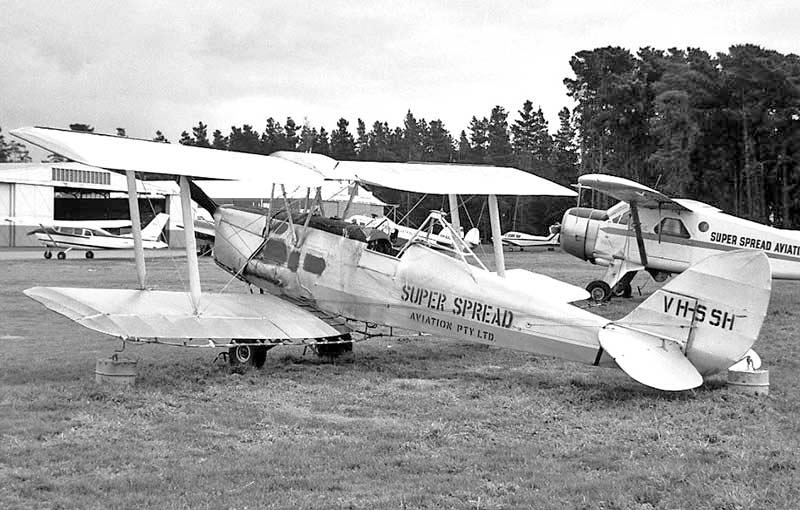
with operators because of their low cost and plentiful spare parts, DCA was increasingly concerned by the high rate of severe
pilot injuries in routine accidents. DCA mandated the overturn truss to protect the pilot's head if the aircraft overturned, and from
1962 each agricultural company was required to reduce its DH.82 fleet by a third, until the type was grounded from ag. flying.
Super Spread Aviation at Moorabbin Vic owned over 20 Tiger Moths. Here's sprayer VH-SSH at Moorabbin in May 1964.
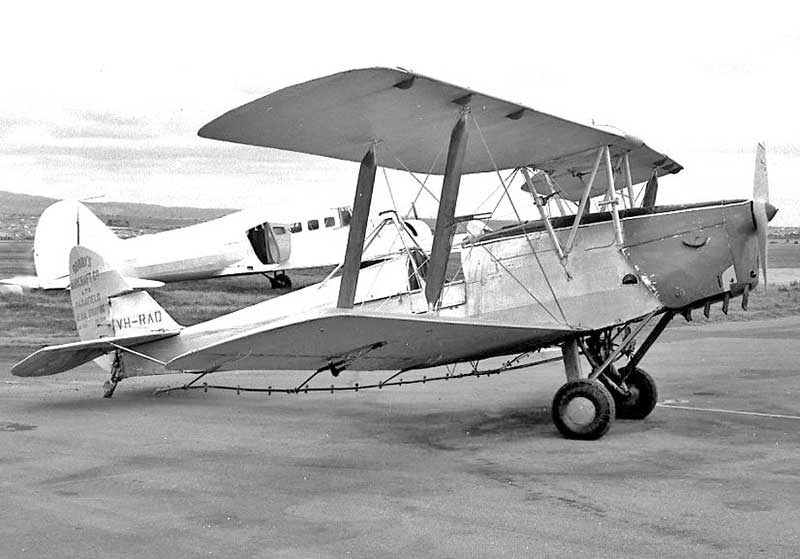
DCA's grounding order, despite more modern aircraft in the fleet. The company took its name from its 1946 founders, brothers
Pat and Frank Robilliard. VH-RAQ was photographed at Parafield in September 1963, just back to base from a spraying job.
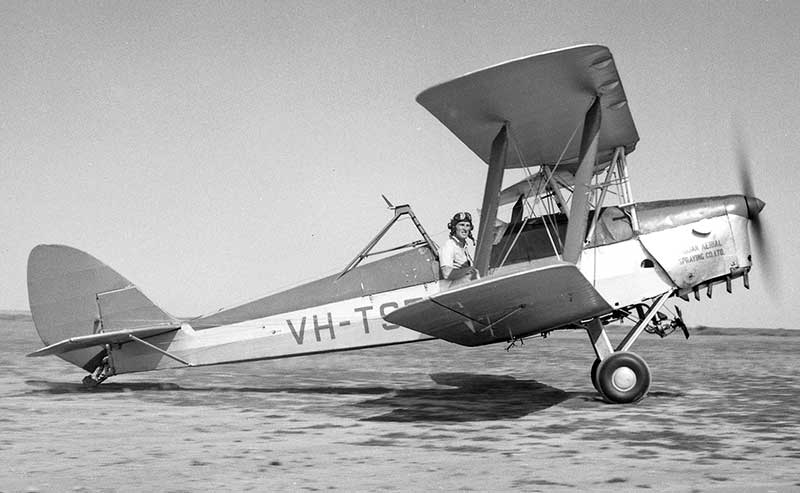
Tiger Moths until replaced by Pawnees. Here's John taxying VH-TSE at Blyth SA in October 1963. Silver and red.
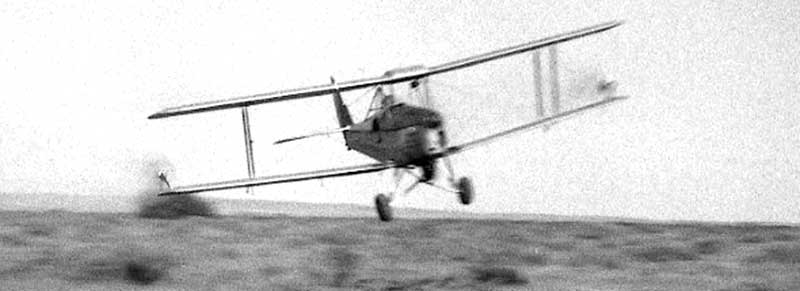
superphosphate spreading.
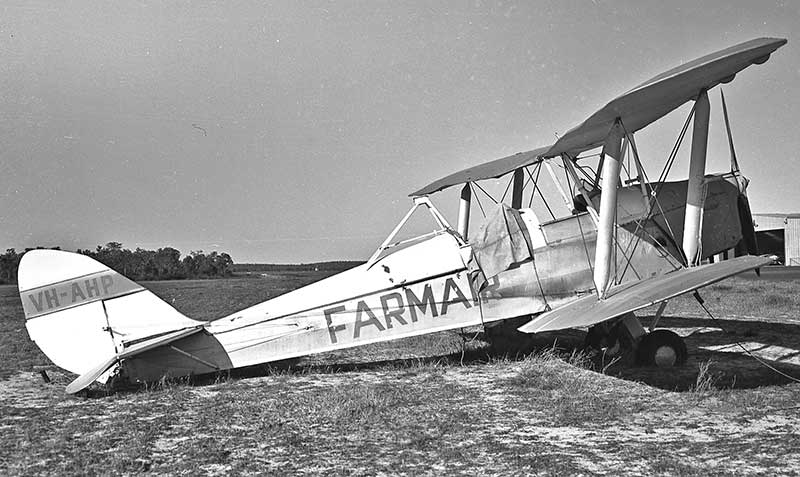
West Australian operator Farmair had moved on to Piper Pawnees. VH-AHP went to a small museum at the Channel 7 Studios
in Perth where it was given a cosmetic restoration by the Studio's stage prop builders and displayed as yellow RAAF A17-161.
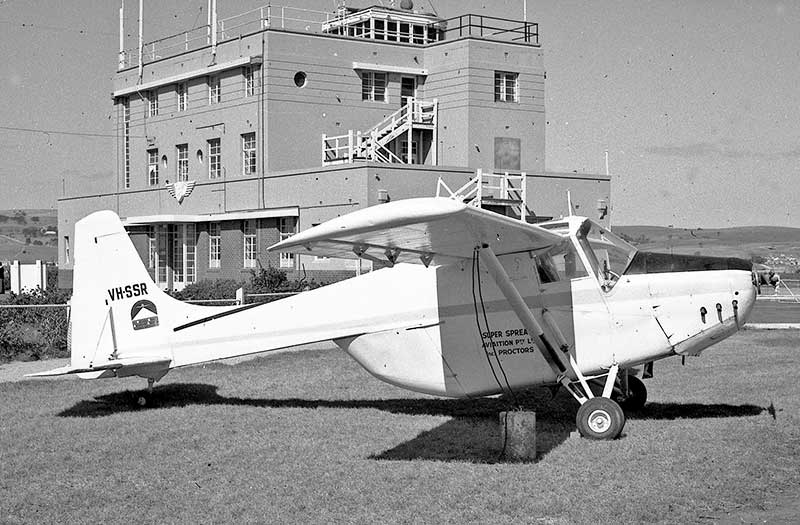
aircraft, put into production as a private venture at Stapleford, England. Eight were sold to Australia. VH-SSR at Parafield in
March 1963 was a rebuild by Super Spread Aviation, using the fuelage of a later model EP.9 Prospector.
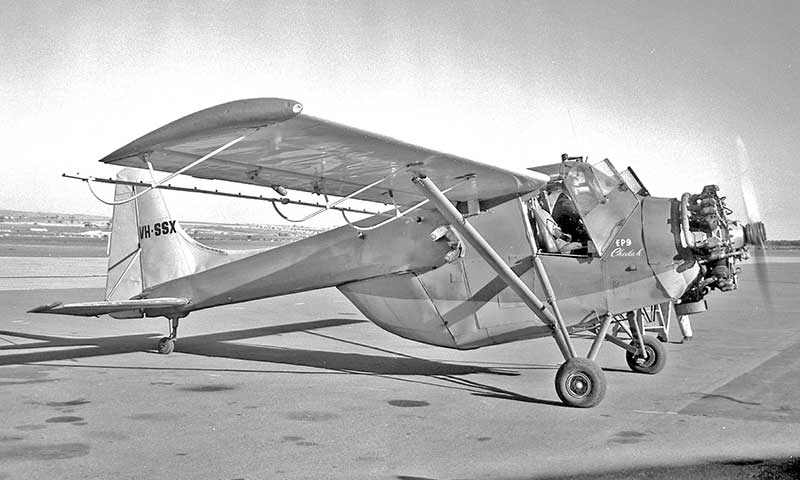
by a 375 hp Armstrong Siddeley Cheetah 10 radial. It was at Parafield in Aprll 1966, operated by Tim O'Neil's company Tonair
based at Tintinara SA, wearing the red and yellow paint scheme of its previous owner Airfarm Associates at Tamworth NSW.
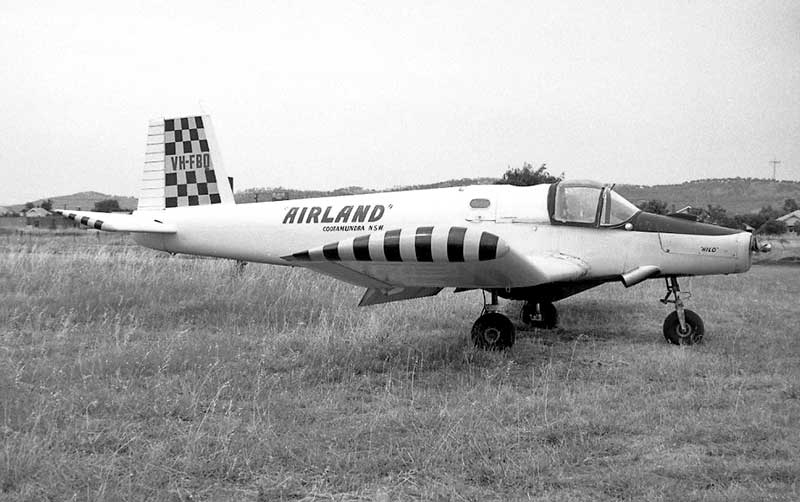
workhorse for NZ aerial agriculture companies. Only four of the original model were imported from NZ to Australia in 1957,
one of these, VH-FBQ, seen at Airland's home base Cootamundra NSW in January 1964. Fletchers enjoyed a resurgence in the
late 1960s when large numbers of the improved and more powerful Air Parts (later AESL) models came across from NZ.
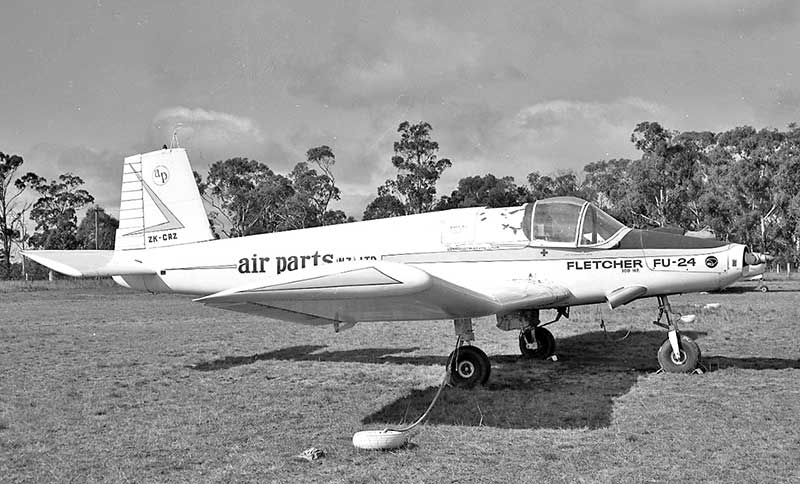
Armidale NSW during July 1967.
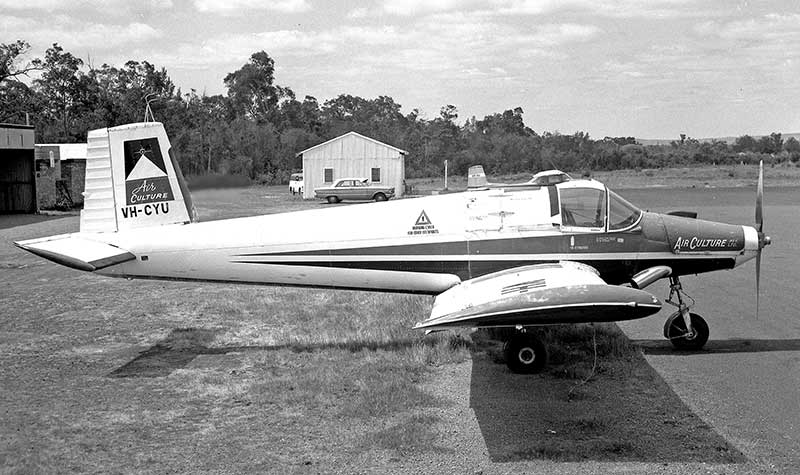
aerial crop dusting seasons. VH-CYU was at Bunbury WA in October 1969.
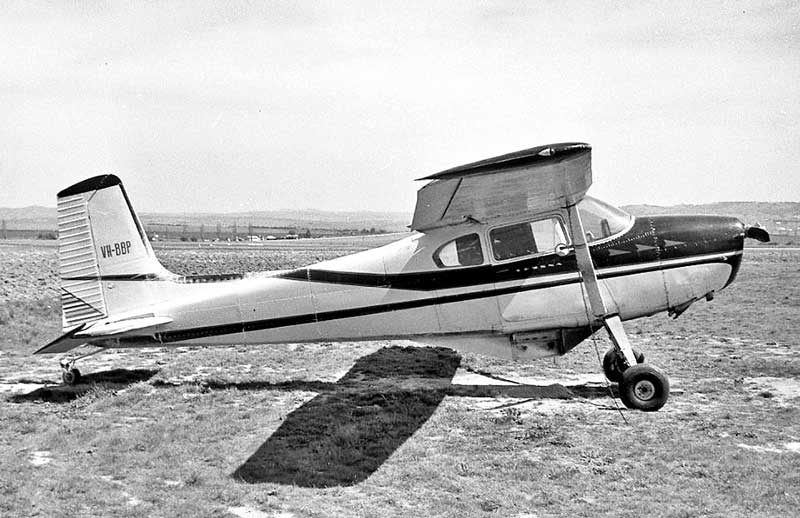
was fitted under the belly, as seen on of Bathurst Pastoral Airwork's Cessna 180C VH-BBP at Bathurst NSW in September 1965.
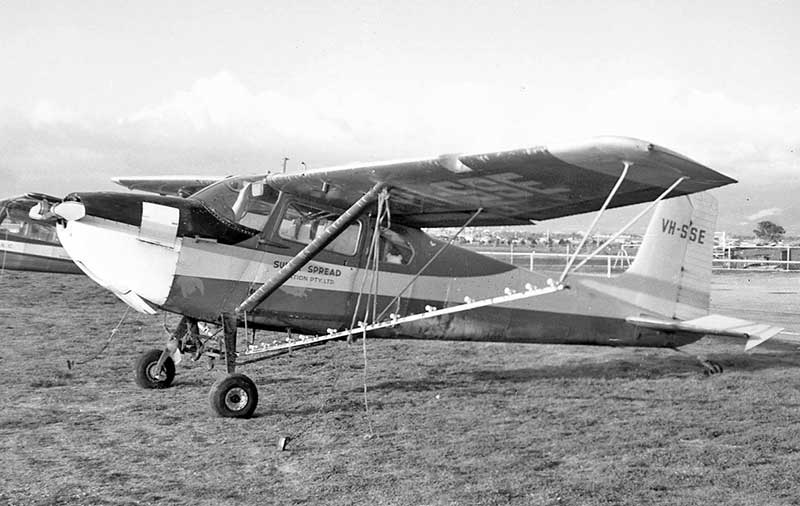
This base model 180 had been built at Wichita in January 1956 and shipped new to Australia as VH-MZK, later VH-MZR.
When acquired by Super Spread Aviation, insecticide spray gear was installed at their Moorabbin base in July 1962 and the
aircraft changed into the company's well known VH-SS_ registration series.

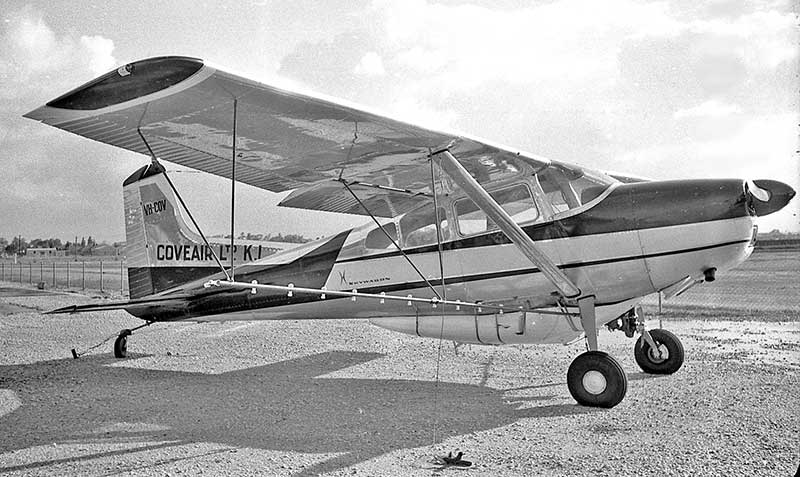
frshly imported 185A VH-COV. The belly tank allowed the cabin to retain its seats for charter work. Adelaide October 1962.
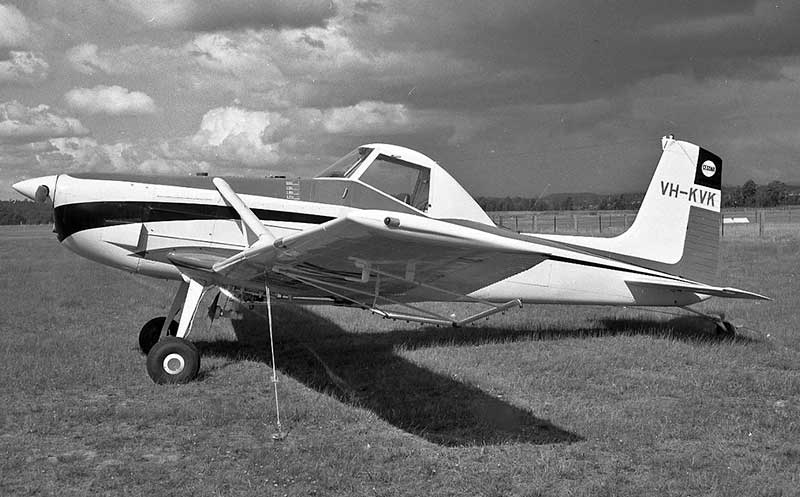
Rex Aviation at Bankstown Airport, Sydney. Here's near new A188 VH-KVK at Cessnock NSW September 1968 as a sprayer.
Later more powerful models Ag Truck and Ag Husky were also widely used.
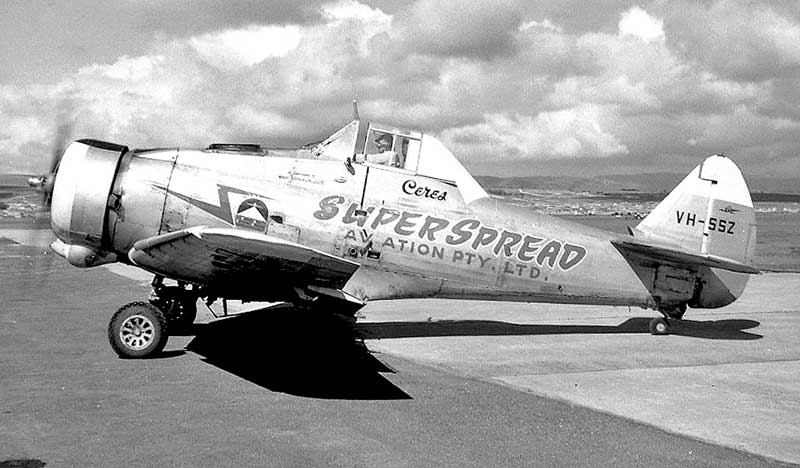
first flew in February 1958. To reduce development time, the design used sections of CAC Wirraway trainer airframes and the
same geared 600hp P&W R1340 Wasp. Despite their popularity in Australia and NZ as heavy load lifters, only 20 were built.
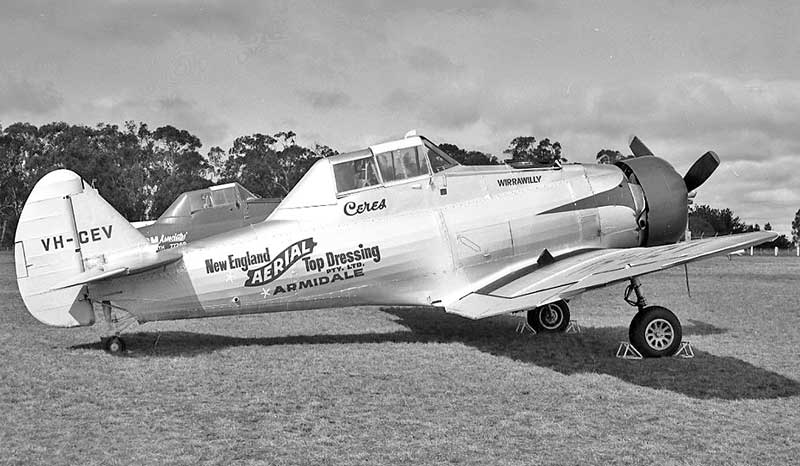
been given the name Wirrawilly in recognition of its CAC Wirraway heritage. The loader driver was carried in a rearward facing
seat behind the pilot. Silver with red trim.
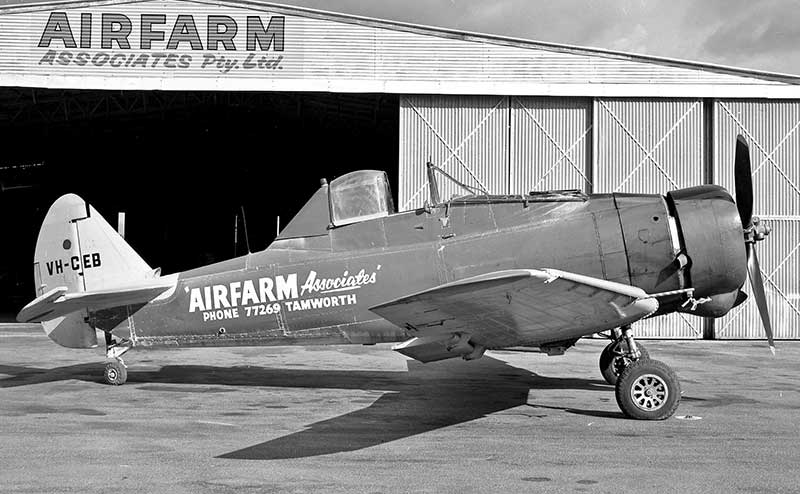
VH-CEB at Tamworth in July 1967 has the curved "blown" cockpit canopy modification to improve pilot visibility.
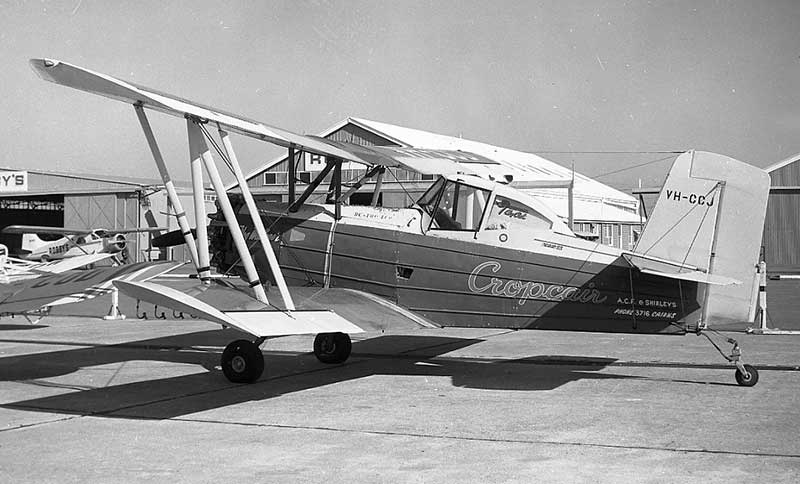
Later more powerful models of these big biplanes were operated by a variety of other companies. After retired from agricultural
flying they were popular for joyriding and banner towing.
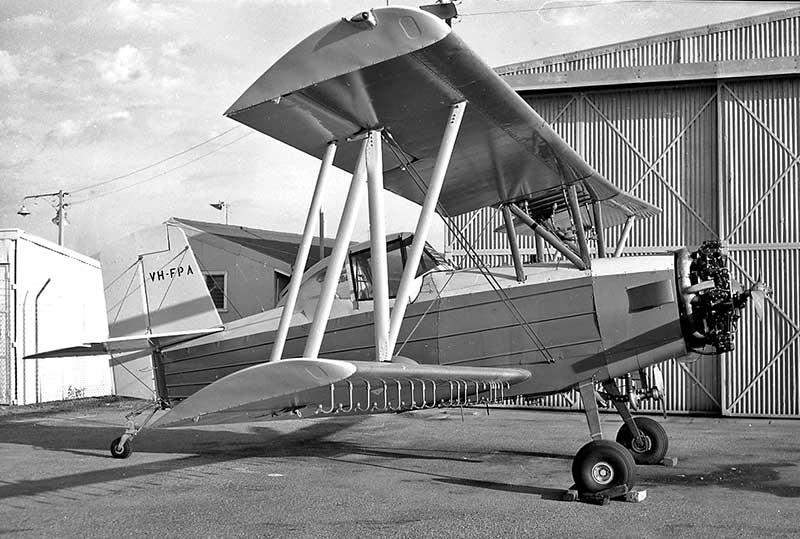
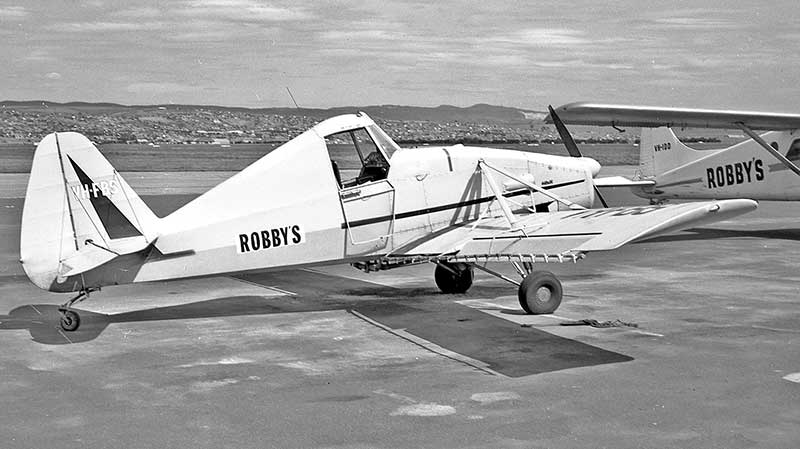
Intermountain Manufacturing Company's IMCO Call Air A9A, built in Wyoming. A total of 26 Call Air A-9s were sold in
Australia from 1964, followed by two larger Call Air B-1s. Although similar layout to the Pawnee 235 with the same Lycoming
0-540 engine, the Call Air was marketed at a lower price and safety features like wooden wings to protect the pilot in accidents.
VH-FBS was the first Call Air imported, seen at Parafield with Robby's Aircraft in November 1966. Yellow with black trim.
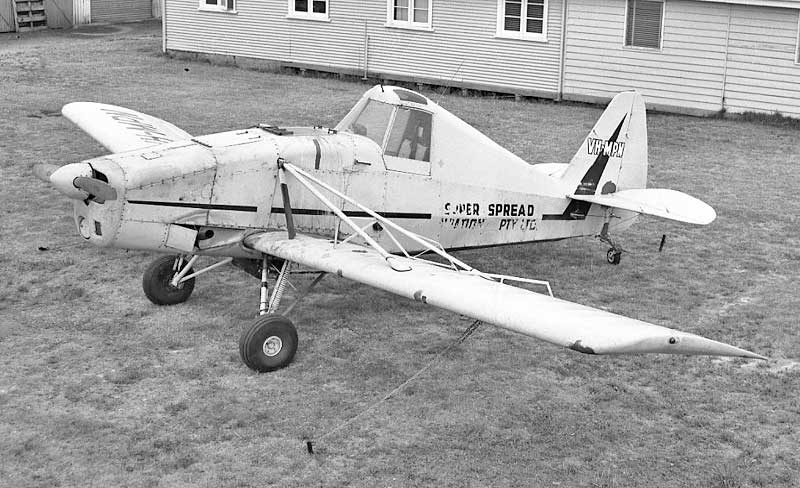
The original gleaming standard yellow and black factory finish is by now looking well worn.
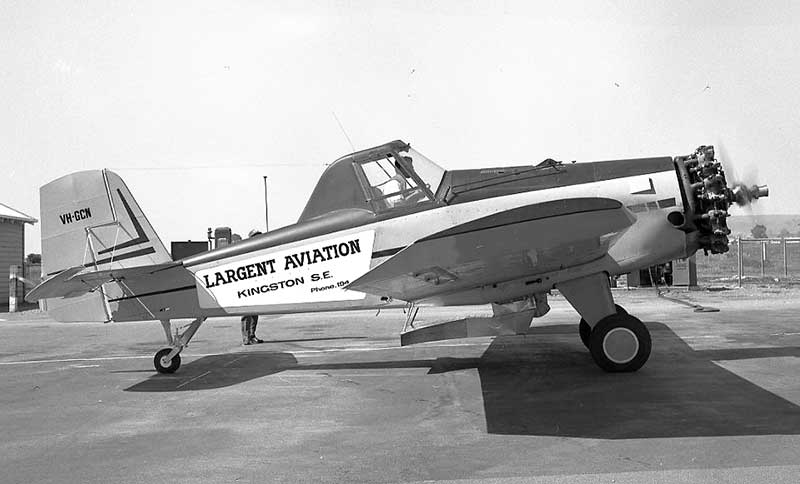
agricultural aircraft used in Australia ever since, leading to the sophisticated Turbo Thrush range of today. VH-GCN was the first
S.2D imported in 1966, seen refuelling at Parafield SA in September 1966, with SA company Largent Aviation at Kingston SE.
The pilot has just fired up the big 600 hp Pratt &Whitney R-1340 radial. Yellow and black standard factory scheme.
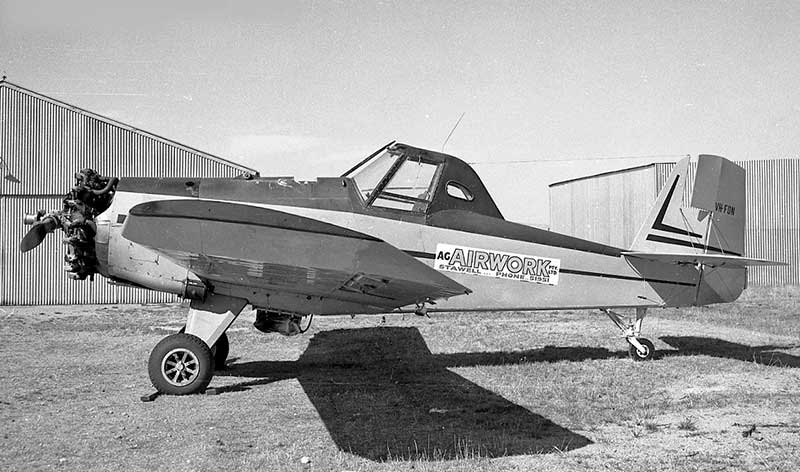
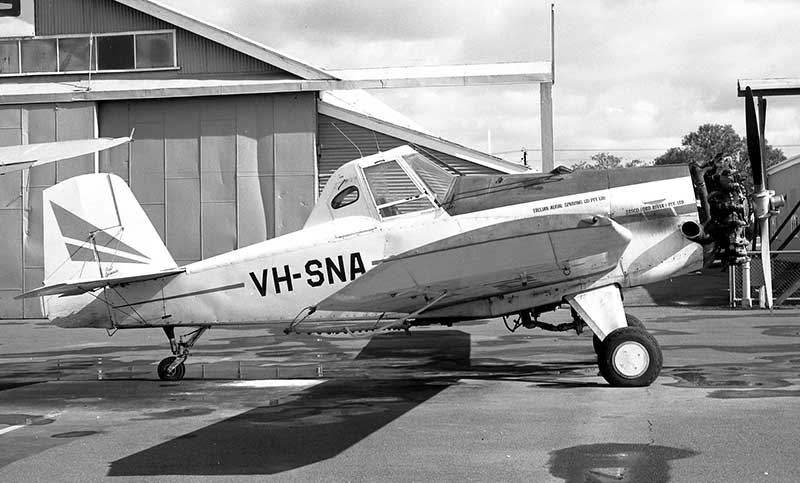
Adelaide and associate company TASCO (Ord River) Pty Ltd based at Kununurra in the north of WA. The loader driver's entry
door behind the pilot can be clearly seen.